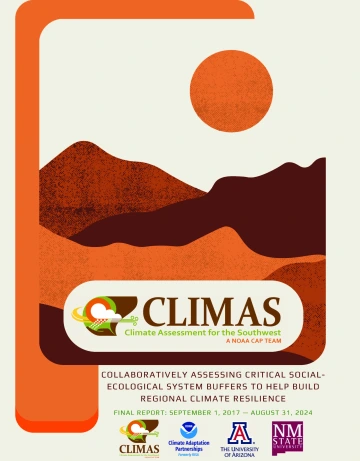Improved Understanding of Climate Variability and Change Relevant to Orchards and Vineyards in Arizona and New Mexico
Orchards and vineyards are particularly sensitive to temperature and are increasingly important to rural economies of the Southwest. However, growers of these high-value perennial fruit and nut crops have limited climate information to support critical decisions about selecting sites and cultivars. This project involves Cooperative Extension in AZ and NM and individual growers to survey a set of orchards and vineyards currently under production to gather information about their siting and cultivars. An assessment will be made of the required temperature conditions for current cultivars, whether these have historically been met, and if they are likely to be met in the coming decades. Crop insurance indemnity records will be used to perform a financial assessment of how site and cultivar selection are functioning in the current regional climate. The suitability of present-day cultivars will be evaluated in the context of anticipated increases in regional temperature.
To help inform the expanding winegrape-growing industry in Arizona, we are compiling and visualizing data of several relevant aspects of climate, soil, and topography specific to the proposed Sonoita, Willcox, and Verde Valley AVAs. This standard information about winegrape-growing regions does not exist for Arizona AVAs. https://cals.arizona.edu/research/climategem/content/arizona-avas.
The Climate Viticulture Newsletter provides a quick look at timely climate topics relevant to winegrape growing in Arizona and New Mexico. Monthly and mid-month special issues are sent via email and posted online. https://cals.arizona.edu/research/climategem/content/climate-viticulture-newsletter.
Project Partners: New Mexico State University Cooperative Extension, University of Arizona Cooperative Extension, Yavapai College Viticulture and Enology Program, Verde Valley Wine Consortium, Merkin Vineyard, Arizona Vignerons Alliance
Additional Funders: NOAA National Weather Service - Tucson Office, PRISM Climate Group, TopoWx, U.S. Geological Survey, NOAA National Centers for Environmental Information, University of Arizona - Arizona Meteorological Network


